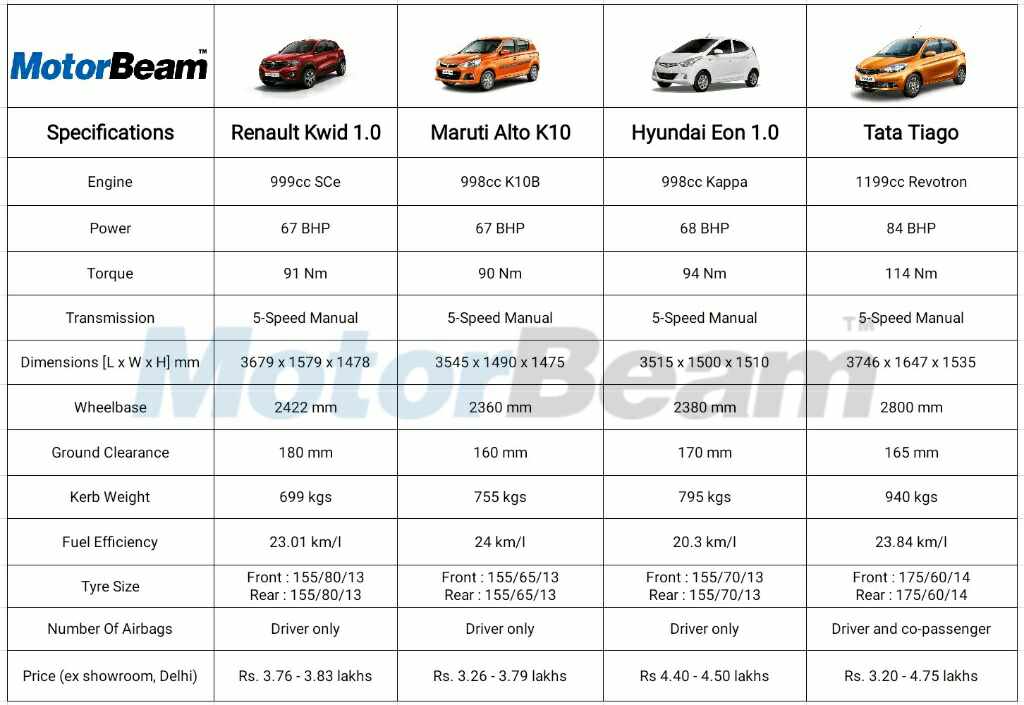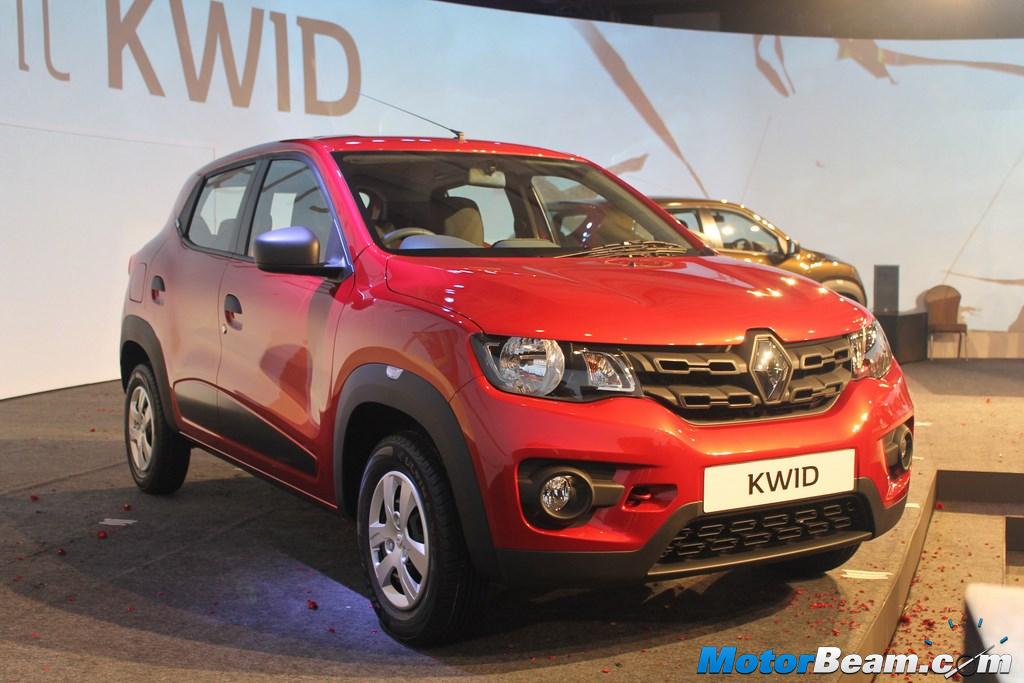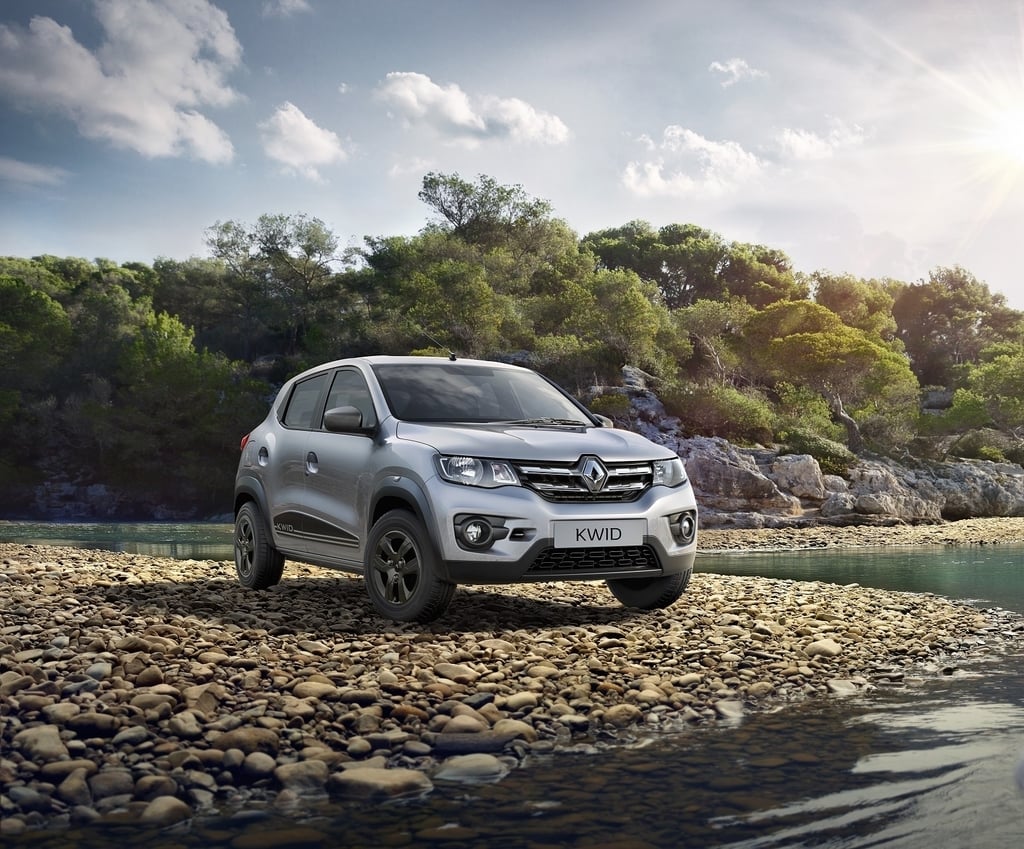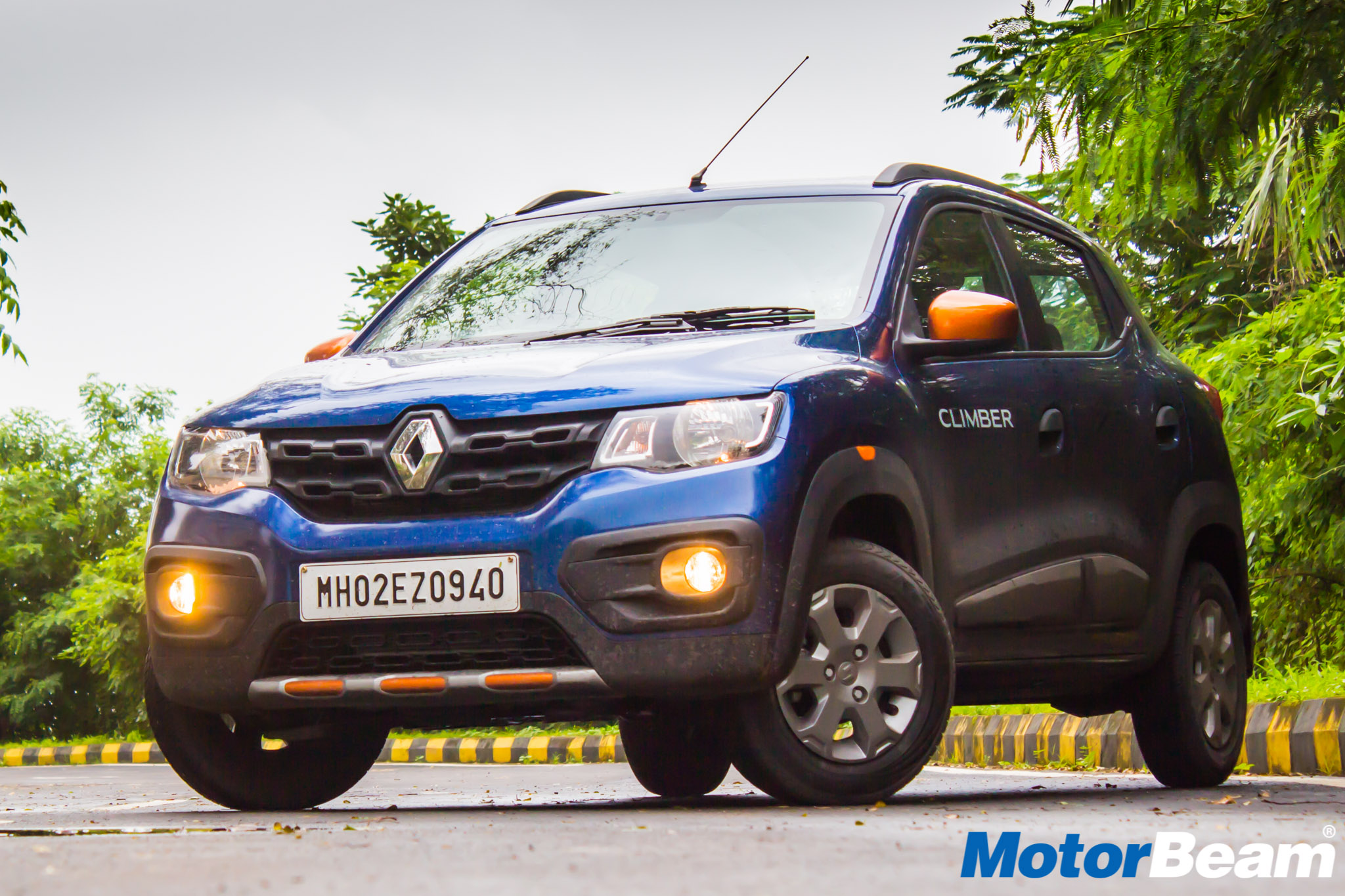Renault has plonked a bigger 1.0-litre engine in the Kwid to fill the only chink in its armour – engine performance. We put the litre-capacity entry-level cars against each other while spicing it up by throwing the Tata Tiago in this spec comparo as well.
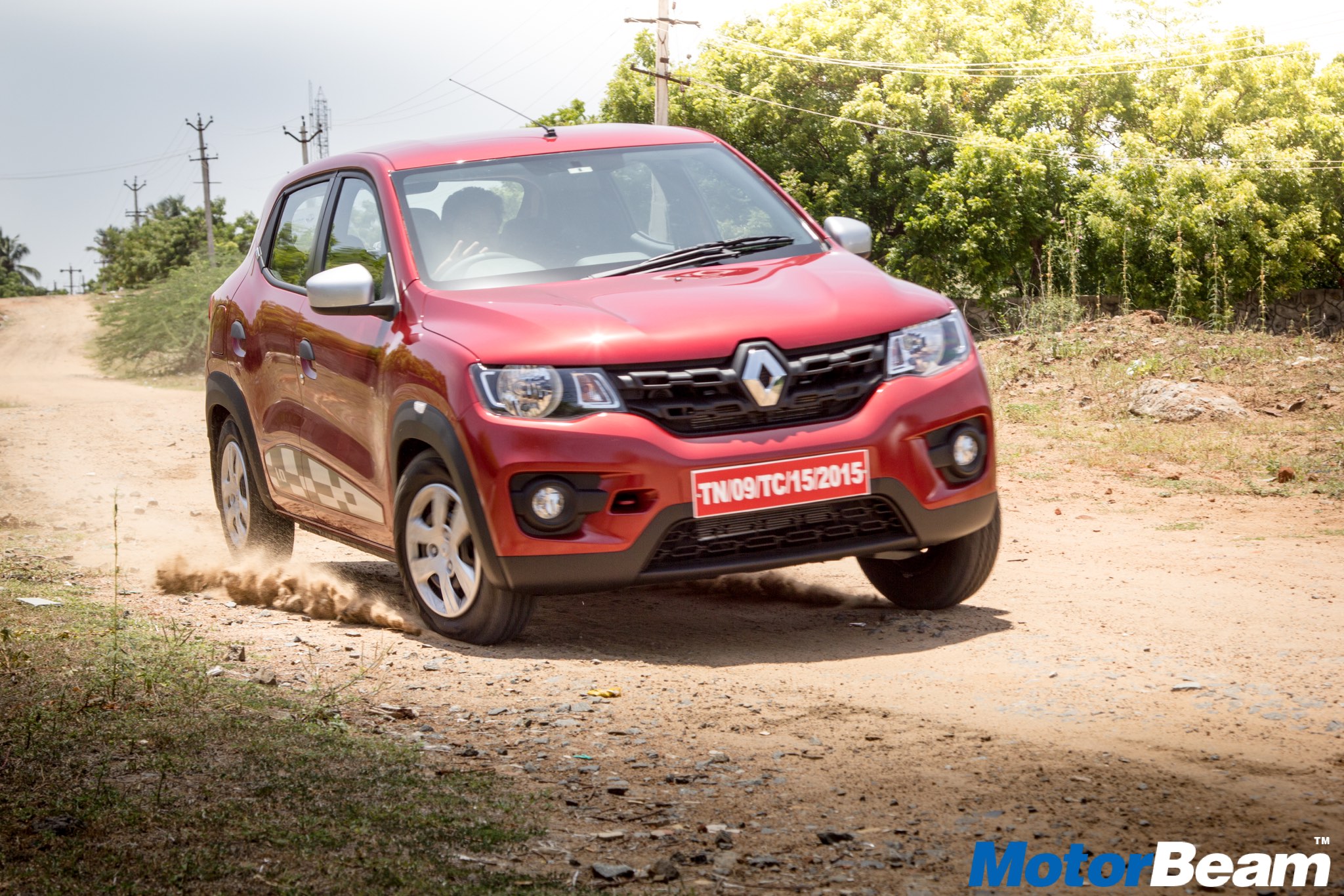
The Renault Kwid has been like a disruption in the force, challenging established players like the Maruti Alto and Hyundai Eon in their own backyard and winning on many fronts, including the sales charts. But the one area of the car which was termed as a damp squib was the tinny 0.8-litre engine. Now Renault has decided to launch the 1.0-litre engine version of the car to cover all of its shortcomings and take the fight of the entry-level small cars to a higher level.
Size and Design – The Renault Kwid is clearly the biggest and most spacious car in its class, having the longest wheelbase and greatest width. The car also has the largest amount of boot space and ground clearance. Also helping the case of this vehicle are its butch looks and SUV-ish stance. The Kwid comes with minimum amount of bling but Renault offers many customisation options for inclined customers. The Kwid 1.0-litre features a black and white chequered decal with a ‘1.0’ lettering on the lower portion of its side profile and silver ORVM caps. At the same time, the Tiago is a whole size larger and looks more mature, with stylish elements from the new IMPACT design.
Features and Interior – The USP of the Renault Kwid hatch is its spacious interior and first in class features such as the touch-screen infotainment system and the fancy digital speedometer. The car feels well put together just like other high quality European cars, but the plastic quality is still a grade lower than the Hyundai Eon. The Tiago is again a steep grade-up from the class standard with high quality plastic which is well put together and has a nice touch to it. All the cars get front power-windows and double-din audio systems.
Powertrain – The increase in engine displacement has resulted in a significant increase in the power figures of the Kwid – from a measly 53 BHP to a respectable 68 BHP. But the magic number here is the power-to-weight ratio, which stands a wholesome 91 BHP per tonne! For reference, the Swift diesel has a power-to-weight ratio of just 74 BHP per tonne. This results in somewhat peppy performance and low fuel-consumption numbers without significant investment. This is possible due to the low kerb weight of the Kwid which is just under 700 kgs. The Alto K10 also has a respectable power to weight ratio of 88 BHP per tonne. The Tata Tiago on the other hand makes 83.3 BHP from its 1.2-litre Revotron unit.
However, the Kwid’s average fuel efficiency falls short of the Maruti Alto K10, but is nonetheless a respectable figure for a petrol powered hatchback. For reference, the Tiago also gives a commendable fuel efficiency figure of 23 km/l. The ride quality of the Kwid is the same as that of its lower displacement version with the same mature handling and bump absorbing qualities which are better than its rivals, but the Tiago again nudges ahead due to a more sorted chassis and better suspension setup.
Verdict – The Renault Kwid is a formidable opponent to the long ruling well established players in the pocket-rocket segment of the Indian market. What it brings to the table are things like a better handling package, features and ride comfort along with some usable highway performance. But at Rs. 4.34 lakhs for the fully loaded variant, it comes dangerously close to the much sought after Tata Tiago, which due to being a class higher and better built, is a much better automobile in our opinion.


